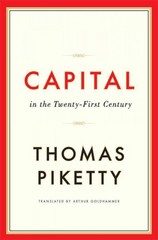Question
All answer should be correct to be rated Identifying and Assessing the ROMM due to Fraud 16. The fraud triangle consists of three components (incentive
All answer should be correct to be rated
Identifying and Assessing the ROMM due to Fraud
16. The fraud triangle consists of three components (incentive or pressure, opportunity, and attitude or rationalization). Which of the three components are present in most every fraud?
a. All three factors are usually present when fraud occurs.
b. Pressure and opportunity
c. Opportunity and rationalization
d. Rationalization and pressure
17. Categories of fraud risk factors (whose presence often has been observed in circumstances where frauds have occurred) in relation to misstatements arising from misappropriation of assets and fraudulent financial reporting are opportunities, attitudes or rationalizations, and pressures or incentives. Which of the following creates an opportunity for fraud to be committed in an organization?
a. Management demands financial success or is aggressive in its application of accounting rules.
b. Poor internal control.
c. Commitments tied to debt covenants.
d. Finding loopholes in the accounting rules to achieve earnings targets.
18. The following are examples of circumstances that may indicate the possibility that the financial statements may contain a material misstatement resulting from fraud, except
a. Transactions that are recorded in a complete or timely manner or are properly recorded as to amount, accounting period, classification, or entity policy.
b. Unsupported or unauthorized balances or transactions.
c. Last-minute adjustments that significantly affect financial results or unusual journal entries.
d. Tips or complaints to the auditor about alleged fraud.
19. The following are examples of circumstances that may indicate the possibility that the financial statements may contain a material misstatement resulting from fraud, except
a. Missing documents.
b. Documents that appear to have been altered.
c. Unavailability of other than photocopied or electronically transmitted documents when documents in original form are expected to exist.
d. Significant explained items on reconciliations.
20. Which of the following is most likely to be presumed to represent fraud risk on an audit?
a. Capitalization of repairs and maintenance into the property, plant, and equipment asset account.
b. Improper revenue recognition.
c. Improper interest expense accrual.
d. Introduction of significant new products.
Responding to Assessed ROMM due to fraud
21. Statement 1: Auditors are required to perform extended audit procedures to detect material errors and irregularities if previously performed examinations indicate that they may exist.
Statement 2: Audit procedures that are effective for detecting an unintentional misstatement may be ineffective for an intentional misstatement that is concealed through collusion.
a. True, true c. False, true
b. True, false d. False, false
22. Which of the following is most likely to be an overall response to fraud risks identified in an audit?
a. Supervise members of the audit team less closely and rely more upon judgment.
b. Only use certified public accountants on the engagement.
c. Place increased emphasis on the audit of objective transactions rather than subjective transactions.
d. Use less predictable audit procedures.
23. Which of the following is most likely to be a response to the auditor's assessment that the risk of material misstatement due to fraud for the existence of inventory is high?
a. Observe test counts of inventory at certain locations on an unannounced basis.
b. Perform analytical procedures rather than taking test counts.
c. Request that inventories be counted prior to year-end.
d. Request that inventory counts at the various locations be counted on different dates so as to allow the same auditor to be present at every count.
24. As part of designing and performing procedures to address management override of controls, auditors must perform which of the following procedures?
a. b. c. d.
Review accounting estimates for biases
Yes
Yes
Yes
No
Examine all journal entries above materiality
Yes
No
Yes
Yes
Examine adjusting entries Yes Yes No Yes
Review unusual transactions Yes Yes No No
25. Which of the following accounting issues is most likely to raise an auditor's professional skepticism about earnings manipulation?
a. Progress payments
b. Allowance for doubtful accounts
c. Sales returns
d. Cash receipts
Conclusion and Reporting
26. Communication of a misstatement resulting from fraud, or a suspected fraud, or error to the appropriate level of management on a timely basis is important because it enables management to take action as necessary. Ordinarily, the appropriate level of management is
a. At least equal to level of persons who appear to be involved with misstatements or suspected fraud
b. At least one level above persons who appear to be involved with the misstatement or suspected fraud
c. The audit committee of the board of directors
d. The head of internal audit department
Step by Step Solution
There are 3 Steps involved in it
Step: 1

Get Instant Access to Expert-Tailored Solutions
See step-by-step solutions with expert insights and AI powered tools for academic success
Step: 2

Step: 3

Ace Your Homework with AI
Get the answers you need in no time with our AI-driven, step-by-step assistance
Get Started


